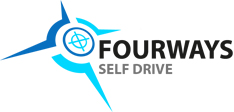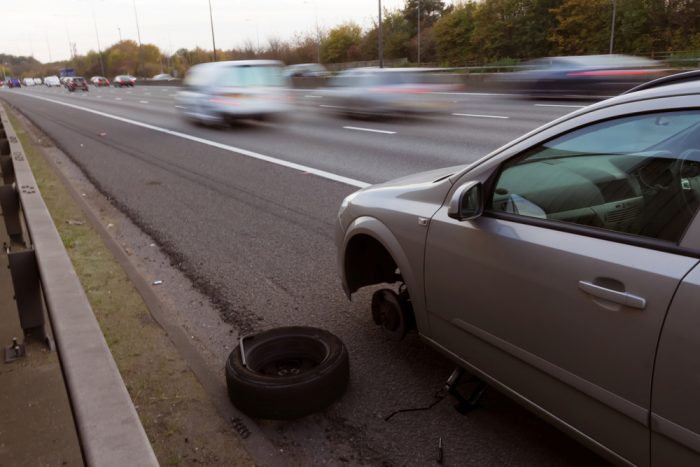What to do if you break down on a motorway
Breaking down on a motorway can be a daunting experience, especially if it’s never happened to you before. The Highway Code says that you should leave the motorway at the next exit, or pull into a service area. However, this might not be possible.
If you can’t stop, pull onto the hard shoulder, stop as far left as possible and turn your wheels to the left. Try to stop near an emergency phone, which can be found at one-mile intervals along the hard shoulder.
Put your hazards on
As soon as you realise that something is going wrong with your vehicle, make sure you put your hazards on. This alerts other road users to the fact you’re having vehicle problems and they can act accordingly.
Leave your hazards on, even when your vehicle has come to a stop on the hard shoulder.
Check visibility
If you’re driving at night, or the visibility is poor (for example, if there’s fog or heavy rain) then it’s important that you also turn on your sidelights on. If they’re needed, then make sure that you put your back-fog lights on too.
Exit the vehicle on the left
Once your vehicle has come to a stop, make sure that you and any passengers exit the vehicle on the left, especially if there’s a lot of other traffic on the road. This keeps you safe and minimises the risk to other road users.
Leave pets in the car
We all know that if your pet is in an unfamiliar environment, it can be stressful for them, so, unfortunately, it’s advised that you leave your pet in the car. The Highway Code advises that they’re left there unless you consider it to be an emergency.
If it is, then make sure that they’re kept under control at all times. There’s nothing worse than an unrestrained pet, a motorway and other cars.
Wait behind the barrier, behind your vehicle
As soon as everyone has exited the vehicle, then make sure that they wait behind the barrier, behind the vehicle. This helps to keep them safe in the event that someone doesn’t notice your car and there’s an impact.
If you’re on a motorway, then don’t put a warning triangle behind your vehicle; you should spend as little time standing on the hard shoulder as possible. The only time you could be safe to use the warning triangle is if you’re on a quiet, single carriageway road where there is minimal traffic.
Phone for help
If you don’t have a mobile phone, or the one you have has run out of battery, then you need to call for help using one of the emergency phones found along the hard shoulder.
These are at one-mile intervals and connect directly to the Highways Agency or to the Police. The phones are easy to identify, as they’re in bright orange boxes. Always face the traffic when you’re using one of the phones, and provide as much information as possible to who you speak to. This information should include:
- Your location
- Number of passengers
- Details of the incident or breakdown
- If there are any vulnerable persons with you (if you’re with small children, travelling alone, have or are with someone who has a disability)
Returning to your vehicle
Once you’ve spoken to the Highways Agency or the Police, it’s time to return to your car. Make sure you stay well away from the carriageway and the hard shoulder, walking in single file if you’re with passengers. Ideally, walk behind the barrier to ensure that you and everyone around you are safe.
Rejoining the motorway
Once your vehicle has been restarted or the fault has been fixed, then it’s time to rejoin the motorway. Wait for a gap in the traffic, but if one doesn’t present itself, then be patient.
If possible, use the hard shoulder to build up speed before you rejoin the traffic flow. This helps to reduce the need for other road users to avoid you, and significantly reduces the risk of someone hitting your vehicle.
So there we have it, our advice on what you should do if you find yourself stranded and broken down on a motorway. It can be a scary experience, but if you follow all of the advice above you should be safe. Remember, make sure you stay calm and don’t put yourself, or others, at risk.
If you’ve got your own advice on what to do if you break down on a motorway, then we’d love to hear your thoughts, so make sure you let us know in the comments below. Alternatively, you can join the conversation on our Twitter and Facebook pages.
Remember, if you’re looking for self-drive car or van hire, then we’re here to help. Get in touch with a member of our team today to find out how we can help.



